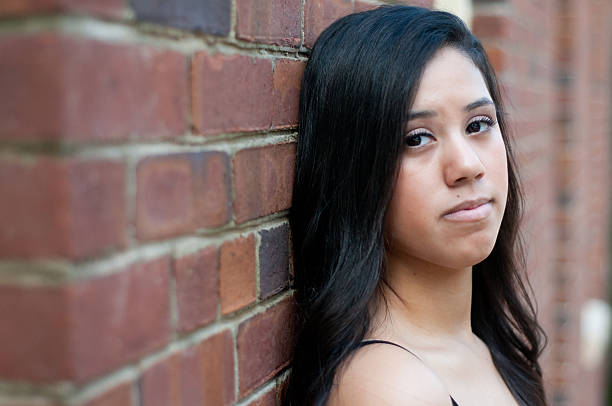
In the 2008 blockbuster movie, “Taken”, a pair of unwitting girls travel to Paris, and make every parent cringe by giving men they just met their plans, place of stay, and confirmation that they’re traveling alone. They’re abducted, and Liam Neeson saves the day and his daughter. However, for the hundreds of thousands of children that are sex trafficked, there’s no one coming to save the day. “Taken” is not what sex trafficking looks like in America. In most cases, our stereotypical perception of a “prostitute” is, in reality, a commercially sex trafficked victim.
 Prostitution is considered the world’s oldest “profession,” however, scratch beneath the surface and the ugly truth is that prostitution is most often an oppression rather than a career choice. There are few women who “choose” to sell their bodies without a trail of deceit, betrayal, systemic discrimination, poverty, and trauma forcing them into sex trafficking. The “choice” is an illusion, and it disproportionately affects children of color.
Prostitution is considered the world’s oldest “profession,” however, scratch beneath the surface and the ugly truth is that prostitution is most often an oppression rather than a career choice. There are few women who “choose” to sell their bodies without a trail of deceit, betrayal, systemic discrimination, poverty, and trauma forcing them into sex trafficking. The “choice” is an illusion, and it disproportionately affects children of color.
Audrey Morrissey, Associate Director & National Survivor Leadership Director at My Life My Choice, counsels young girls before they become victims and intercedes to protect them if they’ve already been exploited. She confirms that children of color are exploited more often, as do most other law enforcement agencies and social service groups:
- According to the FBI, 40% of sex trafficking victims are African Americans, with that number being significantly larger in major metropolitan areas. These numbers might not tell the whole story, considering that the Bureau of Justice Statistics found that nearly 50% of reported incidents are not completed with a declaration of race or ethnicity, so the racial disparity in sexual victimization may be even more significant.
- The U.S. National Human Trafficking Hotline shows that Latinos are disproportionately represented among human trafficking victims and survivors in general.
- Native American groups argue that there is a strong connection between colonization and a persistent targeting of native people for sex trafficking. As an economical consequence of losing their land and culture, some Native American girls and women feel forced to sell their bodies as a one of the few viable options for survival.
Why are Children of Color More at Risk?
Systemic Racism: There’s a straight trajectory from slavery to Jim Crow, redlining, and other practices that have economically stunted people of color and presented barriers to upward mobility. The result leads to trends that make children of color more likely to experience a trauma of sexual and/or physical abuse, community or family instability and dislocation, child welfare involvement, out-of-home foster care placement, life as a runaway or homeless youth, disconnection from the education system, and poverty. This makes them more vulnerable targets of trafficking.
 Hyper-Sexualization of Children: There is also a false perception that somehow children of color are more sexually advanced than their white counterparts. This harkens back to the days of slavery when the sexualized exploitation of Black girls and women were part of the slave trading economy. Media and pop culture often reinforce this notion by glorifying “pimping” and portraying children as provocateurs. This feeds the myth that a black or brown child could consent to a sexual act, something that society is less tolerant of for white children. According to a UCLA Law Review article, “The Racial Roots of Human Trafficking,” by Cheryl Nelson Butler, the “hyper-sexualized stereotypes about minority teens continues to drive their prostitution and sexual exploitation. Lawmakers presume that minors have consented to prostitution even when the minor is below the age of consent…Moreover, today’s anti-trafficking movement has failed to understand and address the racial contours of domestic sex trafficking in the United States and even perpetuates the racial myths that undermine the proper identification of minority youth as sex trafficking victims.”
Hyper-Sexualization of Children: There is also a false perception that somehow children of color are more sexually advanced than their white counterparts. This harkens back to the days of slavery when the sexualized exploitation of Black girls and women were part of the slave trading economy. Media and pop culture often reinforce this notion by glorifying “pimping” and portraying children as provocateurs. This feeds the myth that a black or brown child could consent to a sexual act, something that society is less tolerant of for white children. According to a UCLA Law Review article, “The Racial Roots of Human Trafficking,” by Cheryl Nelson Butler, the “hyper-sexualized stereotypes about minority teens continues to drive their prostitution and sexual exploitation. Lawmakers presume that minors have consented to prostitution even when the minor is below the age of consent…Moreover, today’s anti-trafficking movement has failed to understand and address the racial contours of domestic sex trafficking in the United States and even perpetuates the racial myths that undermine the proper identification of minority youth as sex trafficking victims.”
Loss of a Parent: Exasperating circumstances, such as parent estrangement, divorce, or death that leaves a child without a parent or proper supervision is incredibly damaging. When the offer of love comes in the form money, gifts, shelter, and/or security, it’s easy for a child to fall into an exploiter’s trap.
When It’s Not Really a Choice…
“Prostitution isn’t people deferring entrance to Yale while they prostitute to raise money for tuition—that’s not the reality of what it looks like. We’re looking at people in poverty, people of color, people coming out of the foster care system.”– Nicole Bell, who worked as a prostitute after being trafficked as a teen.
Audrey shares that at My Life My Choice, they see four pathways to sex trafficking:
- Force: If you don’t do this…I’ll hurt you. This is particularly prevalent in gangs, where prostituting girls is used to bring in money and resources. For children who were bullied, the protection of a gang offers a semblance of safety, and so a compromise is made.
- Coercion: You need to do this or you’ll lose someone or something you love or need. Another way children and women are forced into sex trafficking is through a threat to their loved ones or stability, sometimes by family members or close acquaintances (i.e. – a displaced girl is forced into prostitution in exchange for a place to live or a young mother is threatened with a call to authorities to remove her child if she doesn’t go along with her exploiter’s plan).
- Befriending: I can get you a better life, come with me. Quite often, after a child is lured into prostitution, she is charged with recruiting other victims. She befriends another target and shows them all the perks she gets and brings a new recruit into the trade. Children with mental health issues and/or learning disabilities who have trouble fitting in are particularly vulnerable to this tactic.
- Seduction: Baby, I love you, and I’ll always have your back… This is the most insidious and common pathway to sex trafficking. A predator will target a victim, buy her gifts, jewelry, salon treatments, and more. After she’s fallen in love, he makes a request that she try selling a sexual act to make ends meet that month. After the initial compromise is made, then there’s the promise of a bigger and better life (cars, houses, trips, etc.) if she tries it again. But that will never come. There’s physical violence, a discovery that there are other women, and emotional abuse. The promise of love they may have never experienced keeps them on the hamster wheel. These victims can be most resistant to treatment (“He’s not a pimp, he’s my boyfriend.”). Many don’t realize they’ve been exploited (“I’m doing this for us, it’s my choice.”). By the time they realize what’s happened, they’re not able to see a way out (“If I leave, he’ll kill me” or “What will I do? Where will I go?”).
 Child sex trafficking victims are not “abducted and physically forced” into the industry. They’re manipulated into the system. When these children become adults, they don’t suddenly become empowered individuals continuing to make a choice to sell their bodies. They’re traumatized individuals who no longer see a viable escape from their circumstances.
Child sex trafficking victims are not “abducted and physically forced” into the industry. They’re manipulated into the system. When these children become adults, they don’t suddenly become empowered individuals continuing to make a choice to sell their bodies. They’re traumatized individuals who no longer see a viable escape from their circumstances.
“A lot of media will portray sex trafficking as young girls chained up to radiators, and that’s a bunch of nonsense. That’s not what it looks like. The most powerful chains are the ones exploiters set up in the mind—they’re invisible,” Audrey shares.
Saving our Children…For Real
While economic equity would solve many of the country’s ills, the more immediate remedy to rescuing our children is to educate them and prevent the exploitation before it starts. My Life My Choice provides survivor-led trainings and sees their average age of intake of victims as 14, so they provide prevention curriculum in 32 states to reach children by 7th and 8th grades. Audrey reported that on average, in a group of 10 attendees, two will report that they’ve been approached by an exploiter or have already been exploited.
 Educating children of color through sources they are most easily influenced by, like church, school, and even social media, is one piece of the puzzle. Expanded access to social services and safety nets, to educational and training opportunities, healthy food, safe homes, and more are needed to truly address the issues of poverty that drive children into sex trafficking.
Educating children of color through sources they are most easily influenced by, like church, school, and even social media, is one piece of the puzzle. Expanded access to social services and safety nets, to educational and training opportunities, healthy food, safe homes, and more are needed to truly address the issues of poverty that drive children into sex trafficking.
Teachers, counselors, administrators, pastors, and other community leaders benefit from training to look for signs of exploitation. Truancy complaints, frequent visits to the nurses, possession of high-end items could tip off a responsible adult to an at-risk teen.
 Ultimately, there needs to be a collective effort to take the term “child prostitute” out of the vocabulary in our conversations, media, legislations, and judicial system. If we truly believe that a child cannot consent to sex, then they cannot consent to “prostitute,” regardless of their race, ethnicity, or background.
Ultimately, there needs to be a collective effort to take the term “child prostitute” out of the vocabulary in our conversations, media, legislations, and judicial system. If we truly believe that a child cannot consent to sex, then they cannot consent to “prostitute,” regardless of their race, ethnicity, or background.
 Focus for Health extends a special thank you to My Life My Choice and Audrey Morrissey, who provided much of the context and information about the realities of victims of color. My Life My Choice is a partner of FFH, and we’re so proud to support their efforts. Learn more about the incredible work they do here.
Focus for Health extends a special thank you to My Life My Choice and Audrey Morrissey, who provided much of the context and information about the realities of victims of color. My Life My Choice is a partner of FFH, and we’re so proud to support their efforts. Learn more about the incredible work they do here.





Join the Conversation